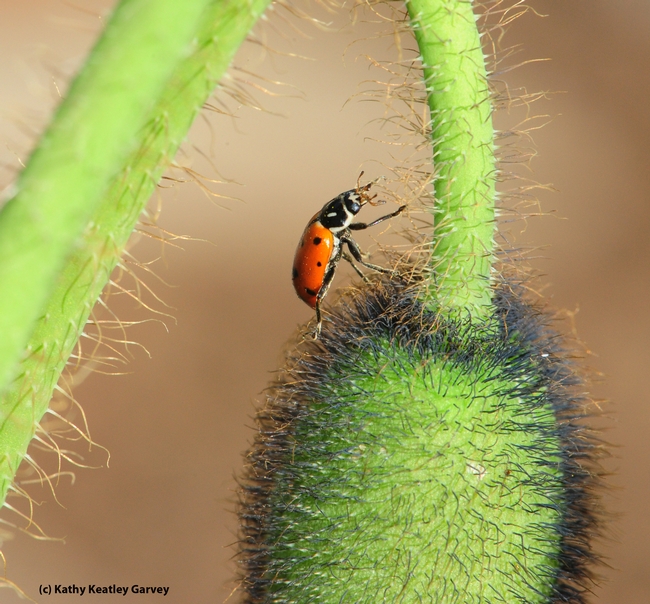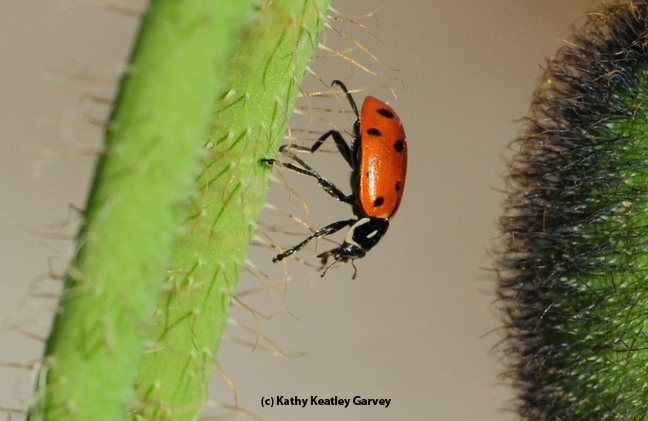- Author: Kathy Keatley Garvey
They're not exactly cute, cuddly little critters.
Some folks say they look like miniature alligators or "ugly, spiky orange-and-black buggy thingies."
Many a novice gardener has glanced at them, smashed them, and yelled "Gotcha! Now stay outta my garden, y'hear?
What they killed were the larvae of lady beetles, aka ladybugs (family Coccinellidae). They're beneficial insects, the good guys (and gals). Both the adults and the larvae of lady beetles feast on aphids and other soft-bodied insects such as scales and mites.
They are not your enemy.
And if there are kids in your family, show them this time-lapse video of the Ladybug Life Cycle by TSST. That would be "The Kid Should See This."
"One ladybug can eat up to 5,000 insects in its lifetime!" says TSST. "Most ladybugs have oval, dome-shaped bodies with six short legs. Depending on the species, they can have spots, stripes, or no markings at all."
Spoiler alert: You can't say that "no animals were harmed in the making of this video." Yes, there's some cannibalism. It's not good to be the last egg hatched.
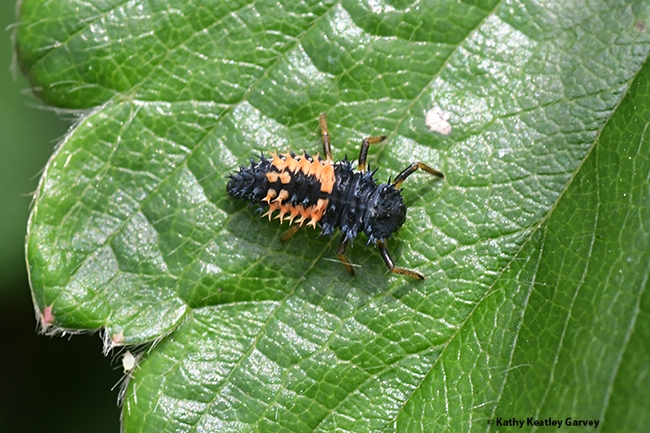
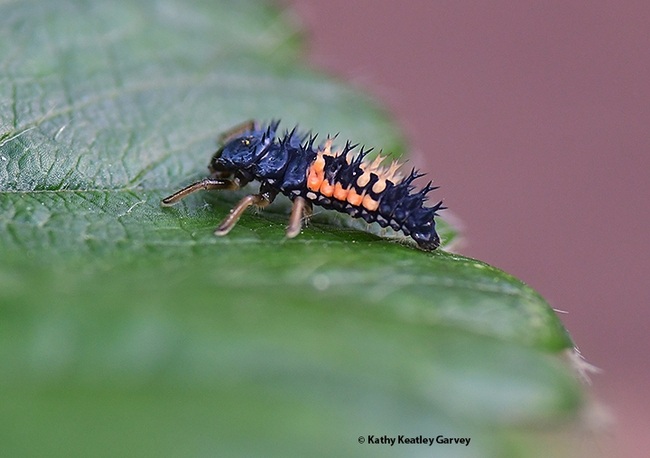
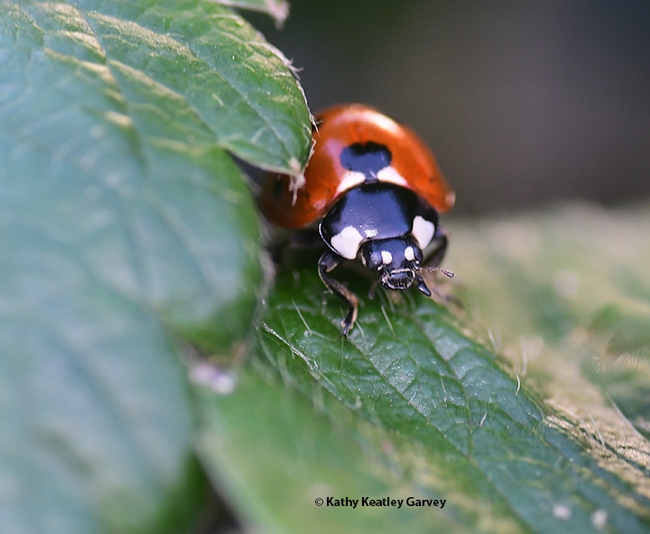
- Author: Kathy Keatley Garvey
If you're an entomologist, an agriculturist, a gardener or an insect enthusiast, you've probably seen the life cycle of a lady beetle, aka ladybug: from the egg to the larva to the pupa to the adult.
You may have missed the pupal stage when the adult emerges--or mistaken the pupal case for something dead (what's that carcass?) or something regurgitated.
Fascinating to watch!
Lady beetles, from the family Coccinellidae, are beneficial insects (some 5000 species) that feast on aphids and other soft-bodied insects. Entomologists call them lady beetles because this insect is not a true bug.
Scores of lady beetles visit our little pollinator garden in Vacaville. They especially like the narrow milkweed, Asclepias fascicularis. Want to see a video on the life cycle? Watch The Stunning Life Cycle Of A Ladybug | The Dodo on YouTube.
Fascinating to watch!
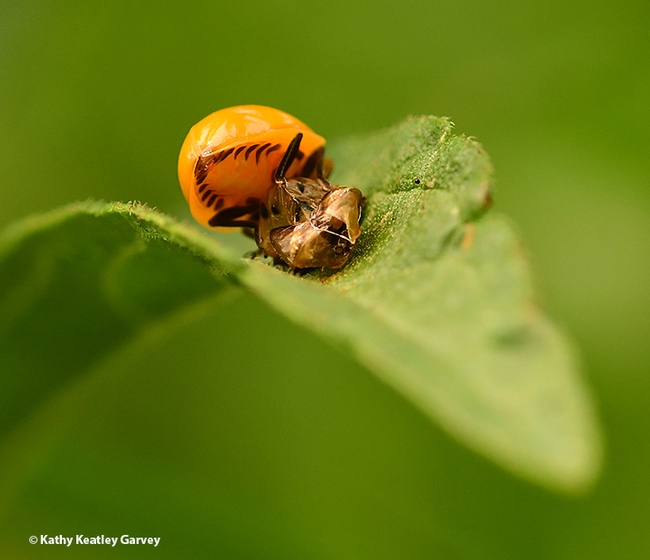
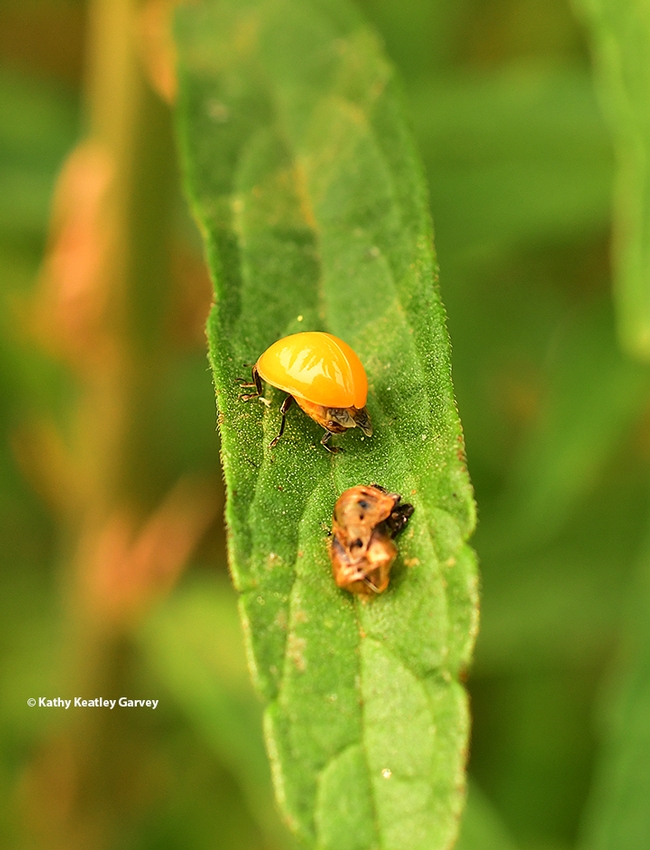
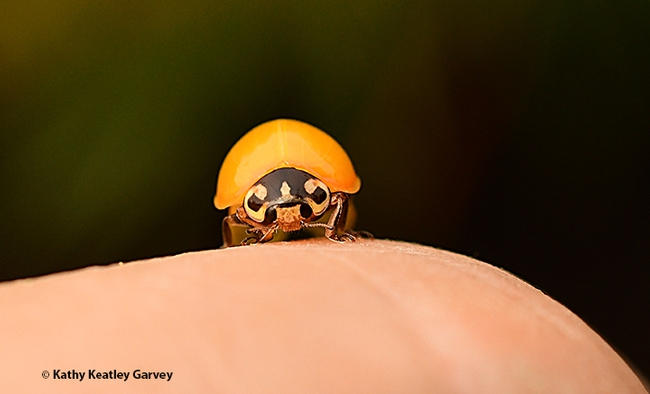
- Author: Kathy Keatley Garvey
Have you ever seen the larva of a lady beetle (aka ladybug) dining on an aphid?
Lights! Camera! Action!
So here is this charming little immature lady beetle chowing down on an oleander aphid that has the audacity to infest the milkweed in our pollinator garden. Chomp! Crunch! Slurp! And then another aphid arrives on the scene. It does not flee. Aphids are not the smartest of insects.
Can you just wait! Hold on! I'm not finished eating this one, yet!
And then an adult lady beetle arrives. She ignores a fat aphid right before her very eyes. Shall we prey?
Can you just wait! Don't go away! I'll eat you when I'm hungry!
A lady beetle (it's not a bug, it's a beetle!) belongs to the family Coccinellidae. Scientists have described about 5000 species worldwide, and about 450 in North America.
The Lost Ladybug Project encourages you to monitor ladybugs and upload photos of them. They also provide good identification tools and photos of the beetles. Hint: not all lady beetles are spotted.
How many aphids can a lady beetle eat in her lifetime of three to six weeks? An estimated 5000 aphids, according to the University of Kentucky Cooperative Extension Service.
That's great pest control!
One thing is for sure: the lady beetles and their offspring patrolling our milkweed plants will never experience famine. This is an all-you-can-eat buffet, and the aphids just keep on a'coming. They do not flee. Aphids are not the smartest of insects.
Now, where are the monarchs? We have milkweed waiting.
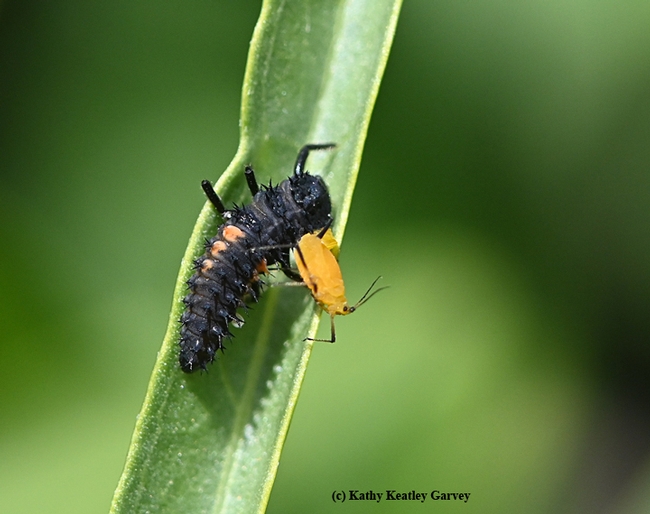
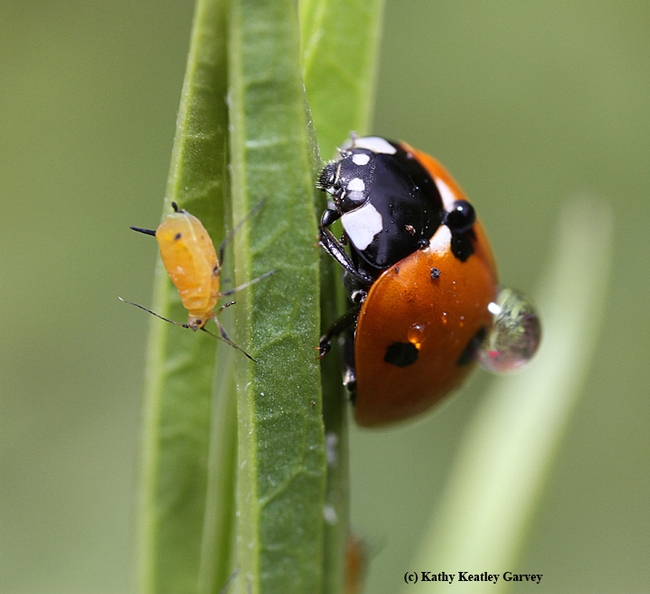
- Author: Kathy Keatley Garvey
Just call them the "incredible aphid-eating machines."
That would be the lady beetles, commonly known as ladybugs (although they are not bugs; they're beetles belonging to the family Coccinellidae, and they're not all "ladies"--some are male!).
How many aphids can a lady beetle eat? Scientists figure around 50 a day. A single lady beetle can eat 5000 aphids during its lifetime, according to the University of Kentucky Extension Service.
That's why they're called beneficial insects!
And it's not just the adult lady beetles that dine on those plant-sucking aphids. So do the larvae.
The UC Statewide Integrated Pest Management Program describes lady beetles as "round- or half-dome-shaped insects with hard wing covers. About 200 species occur in California and most are predators both as adults and larvae. Some species specialize on aphids or other groups; others have a broader diet." (See Lady Beetles Card.)
What's for dinner?
Aphids. Maybe a 50-course meal?
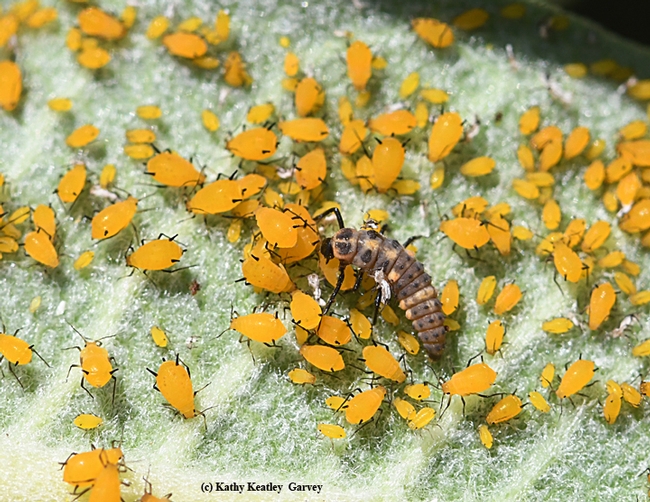
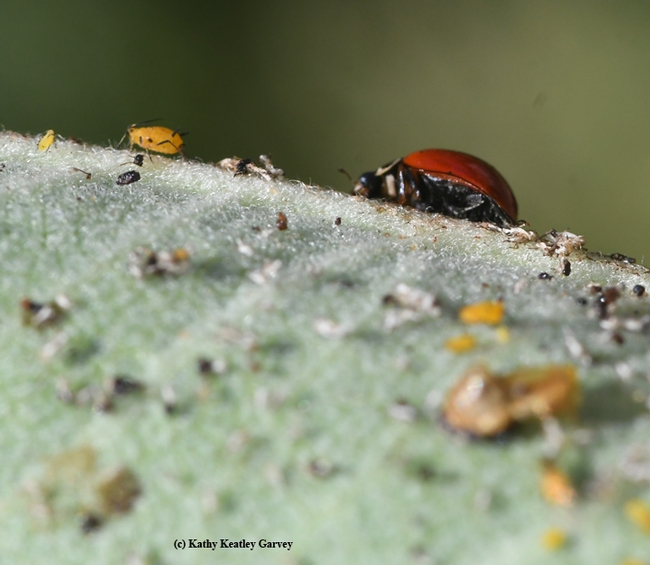
- Author: Kathy Keatley Garvey
Overhead in the lady's restroom of a restaurant at the Sausalito marina:
Mother to daughter: "There's a lady in here."
Daughter: "A lady? Well, why wouldn't there be a lady in here? This is a lady's restroom."
Mother: "Look right over there, on the wall."
Indeed, there was a "lady" in the lady's restroom: a lady beetle. Family Coccinellidae. The damsel in distress was crawling up and down the cement wall searching for something it couldn't find. An escape route!
So, I picked up the domed-wonder and transported it from Marin County to our Solano County home. I deposited the little traveler on an Iceland poppy.
The lady beetle perked up, checked out its surroundings, and began exploring.
Ah, aphids!
Happy Earth Day!
